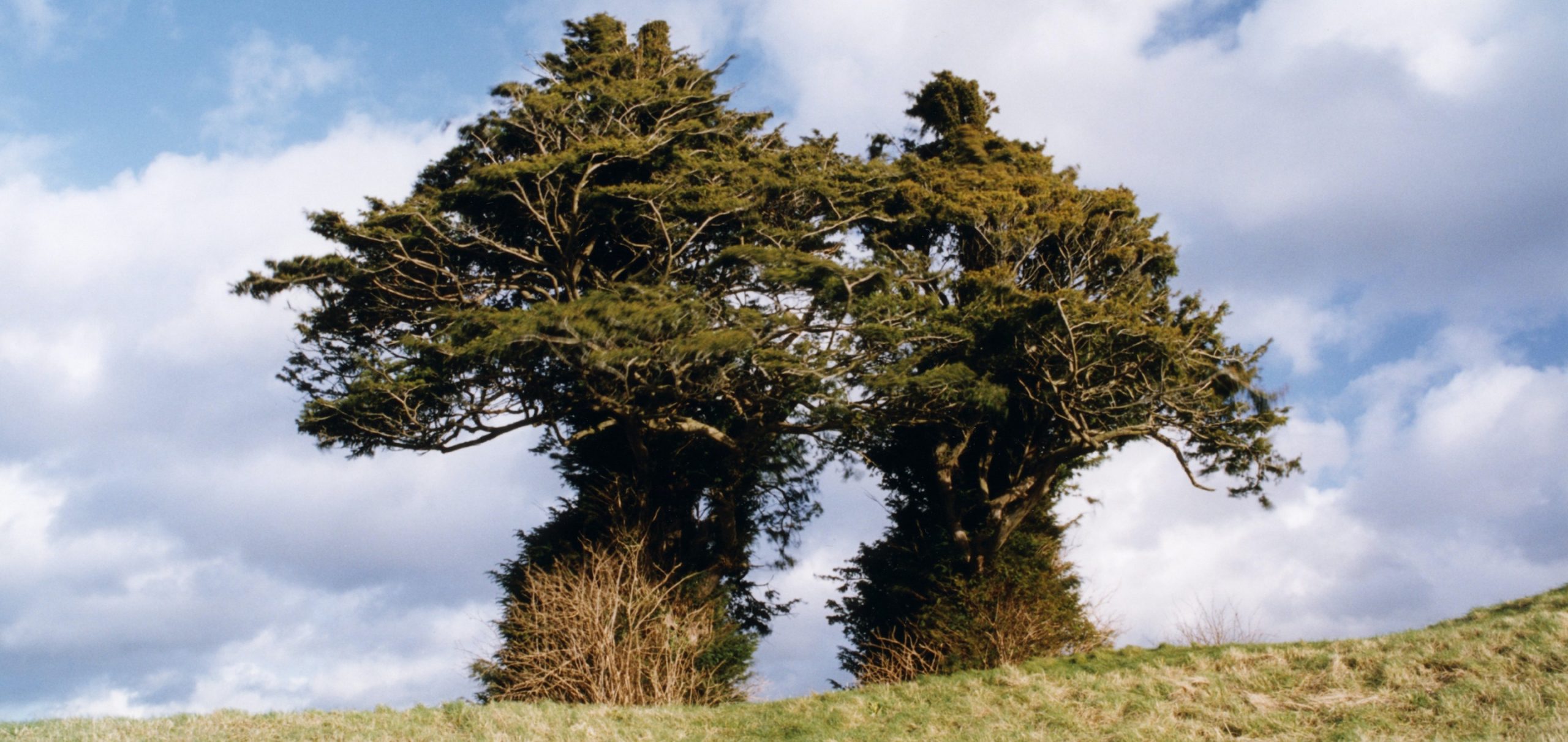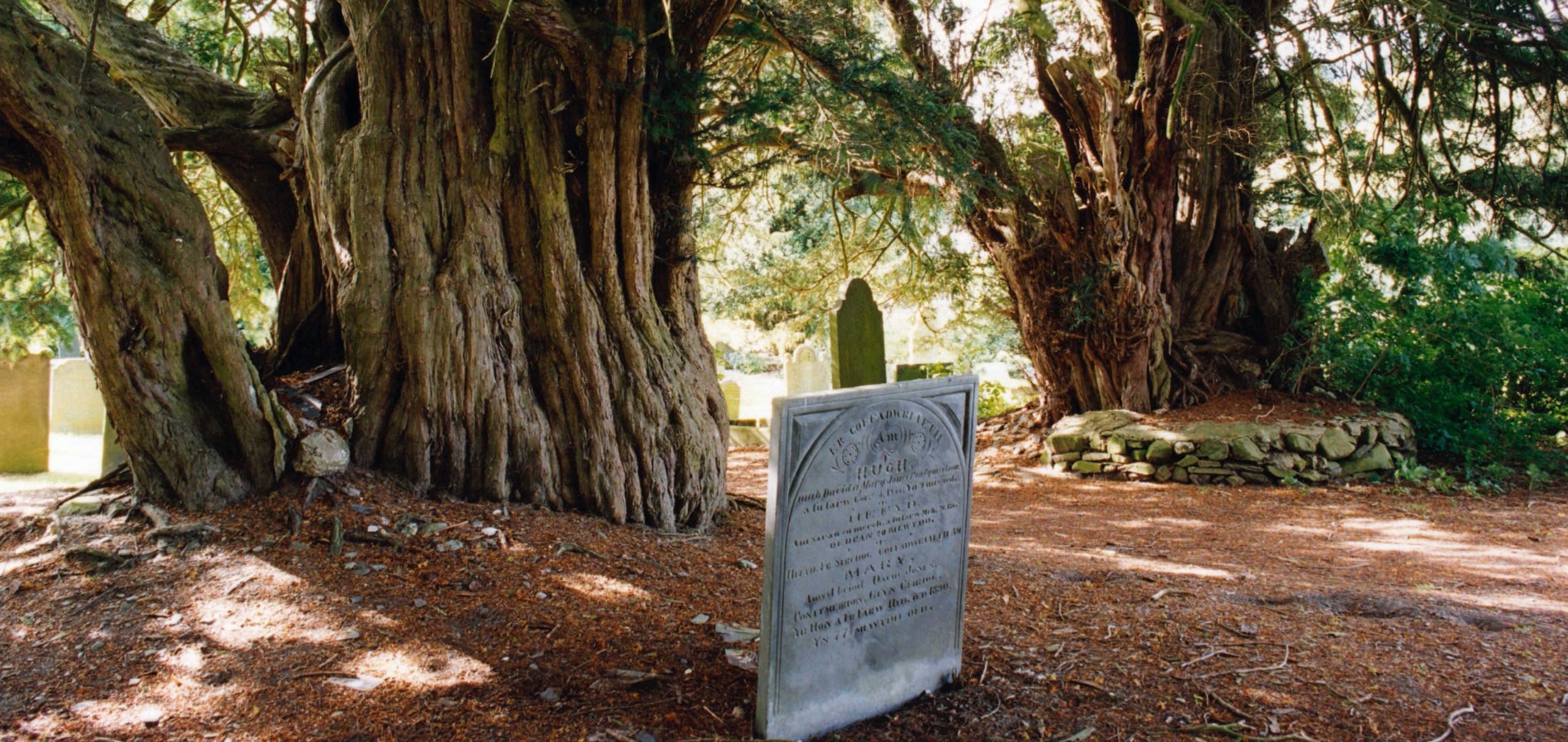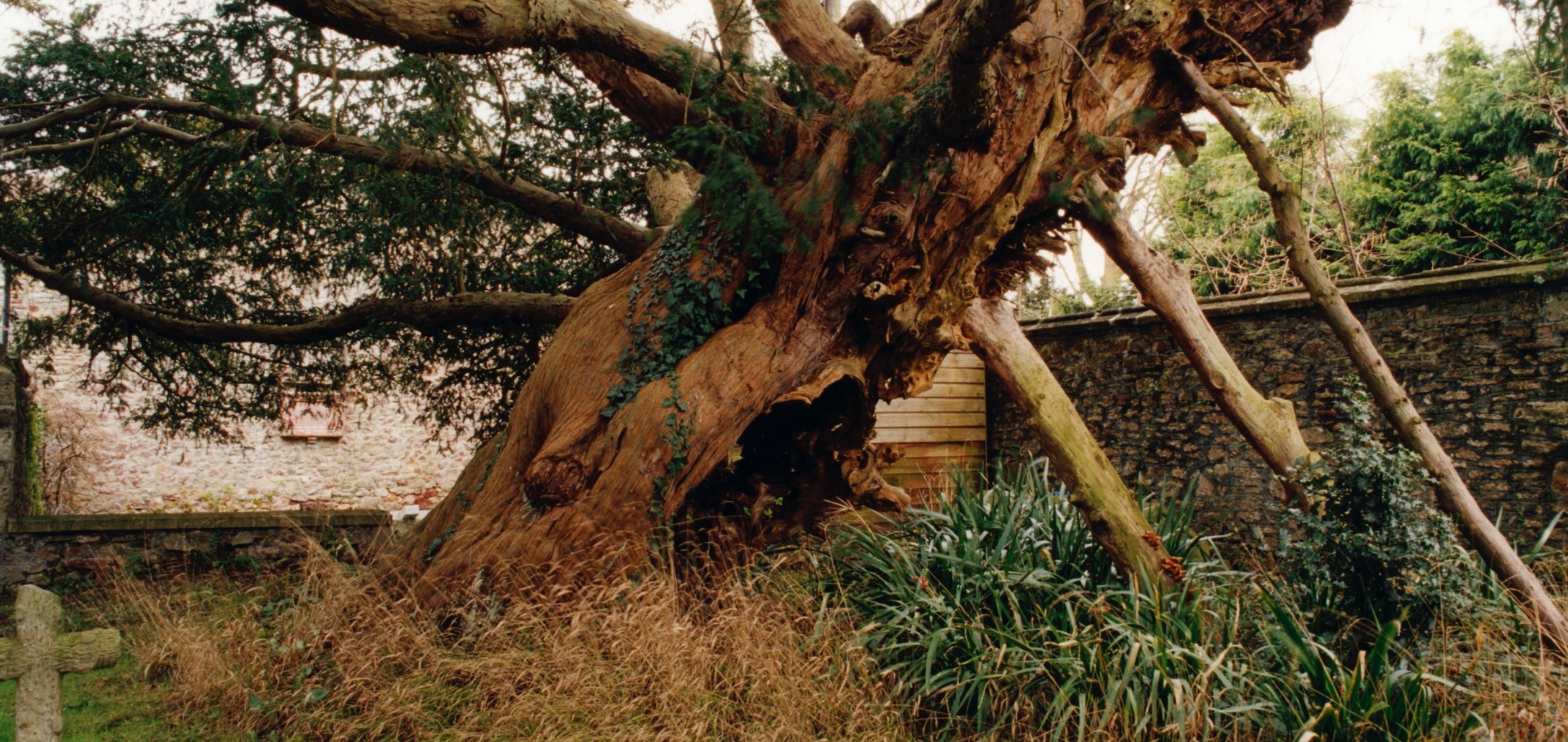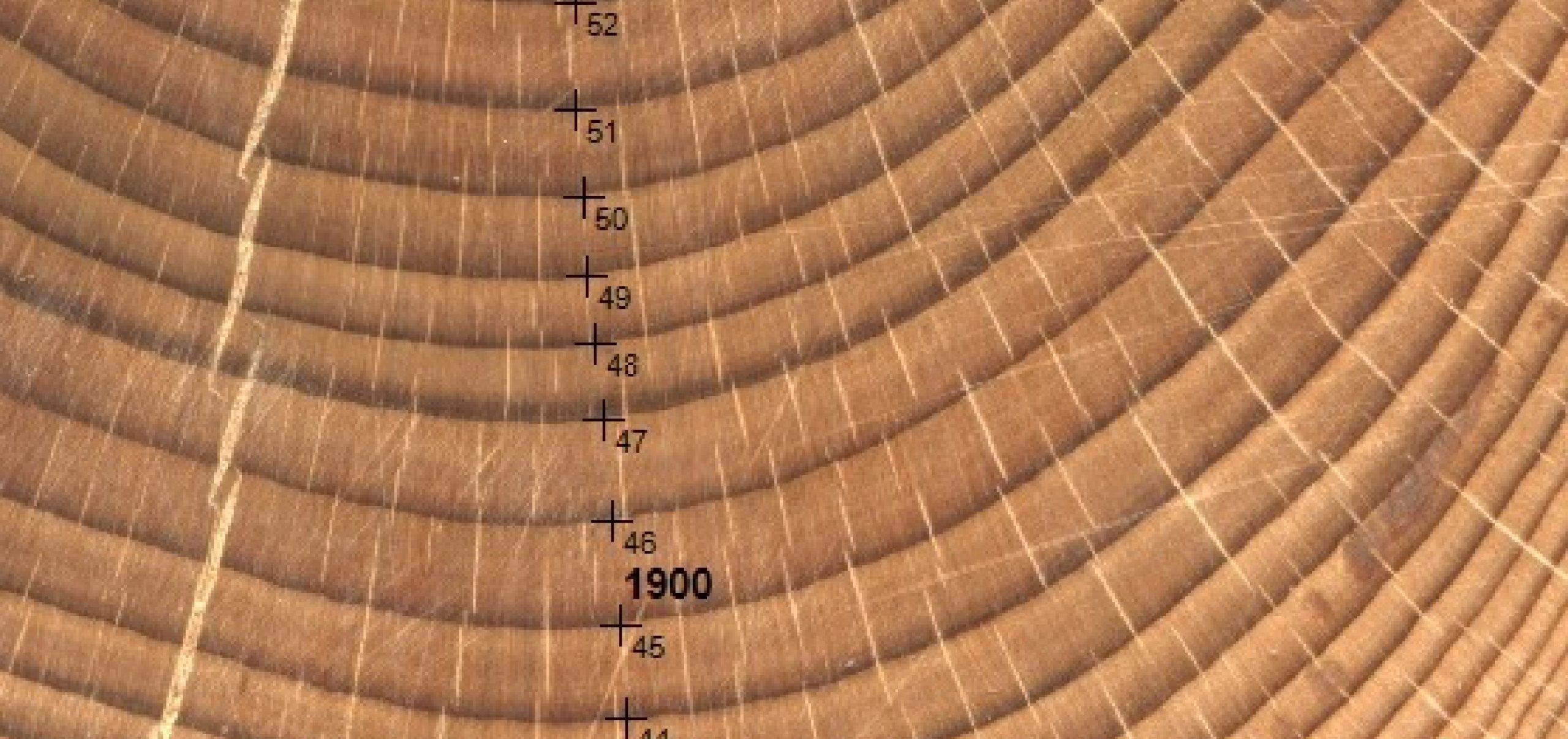

The Ancient Yew Group (AYG) is a conservation body which collects field data and historic material about our oldest Yew trees. We currently have 11 full members, including data gatherers, tree professionals, academics and authors, all of whom have a long history of service to the cause of preserving and studying ancient yews.

An international database of yews, featuring 2500 trees in England, Wales, Scotland, Ireland, France and Spain.
Find a yewAn interactive map of more than 1000 sites where our oldest and most remarkable yews can be seen.
View map

The Church of England and the Church in Wales are custodians of the majority of our oldest trees.
Find out more
